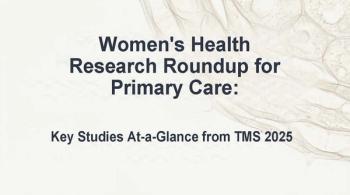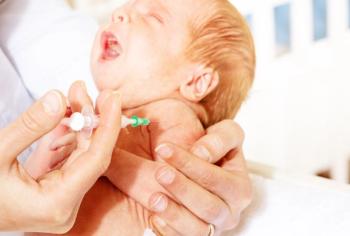
Increased Risk of Long COVID Observed in Women, Persons with Elevated BMI
Analysis of an online survey in the UK found women vs men and higher vs lower BMI were associated with greater likelihood of developing long COVID.
In a cohort of British individuals who tested positive for COVID-19 in 2020, elevated body mass index (BMI) and female sex were identified as the top 2 factors predicting who might develop symptoms of long COVID, according to findings from a recent online survey published in PLOS Global Public Health.
Specifically, the investigators report a 3% increase in relative risk for the condition for every 1 kg/m2 more of BMI (RR 1.03, 95% CI 1.02-1.05). The research also found that women are more likely than men to experience long COVID, ie, male sex was linked with a significant 25% lower risk for developing long-term symptoms (RR 0.75, 95% CI 0.61-0.92).
The study also found that of the 25.4% of patients who utilized healthcare services after recovering from COVID infection, 73.2% were experiencing symptoms of long COVID. The researchers report that this translated to a more than 3-fold increase in the probability of using health care services (RR 3.28, 95% CI 2.54-4.26). The community-based web survey comprises one of the largest studies on long COVID conducted to date in the United Kingdom.
The findings are particularly important as sequelae of the SARS-CoV-2 pandemic continue to emerge because they suggest a method to help identify people who are at risk of developing long COVID, according to comments from lead author Vassilios Vassiliou, MD, PhD, a clinical professor of cardiac medicine at the University of East Anglia’s (UEA) Norwich Medical School, in a
Indeed, the investigators’ objective was to characterize “the burden and predictors” for long COVID in a UK community and to create a statistical model that can guide health care service planning.
The community-based cross-sectional study conducted in Norfolk, East England was part of the Protect Norfolk and Waveney post-COVID-19 syndrome Project, which included adults with COVID-19 infection confirmed via RT-PCR prior by December 6, 2020. This was prior to the availability of any vaccines against SARS-CoV-2.
The online survey comprised 39 single choice, yes/no or Likert scale questions related to a wide range of pre- and post-COVID symptoms and to further health care use.
Findings
Of 6318 surveys deployed investigators received 1487 replies. This final cohort had a mean age of 50 years and 61% were women. Among the 879 participants with BMI information available, the mean was 28.4 kg/m2.
Of the 1487 respondents, 774 experienced post-COVID-19 syndrome symptoms. The incidence of symptoms in women was 55.9% and in men 46.0% (p<.01), suggesting that male sex vs female sex may be protective against long COVID (RR, 0.75 [95% CI, 0.61-0.92]).
Among the full cohort, 25.4% reported use of health care services following their index COVID-19 infection, with 73.2% of these patients reporting post-COVID symptoms. Those with post-COVID symptoms were significantly more likely to use additional health services vs those without (RR 3.28, 95% CI, 2.54–4.26). Men, it was determined, were much less likely than women to use further health services (RR 0.75, 95% CI, 0.58–0.97).
BMI was associated with an increased risk of developing long COVID symptoms (RR, 1.03 [95% CI, 1.03-1.05, for 1 kg/m2]) and also was a positive predictor of further use of health care services (RR 1.027 for each 1 kg/m2 increase, 95% CI 1.01–1.05).
“We show that more than a half of the survey respondents who tested positive for Covid [sic] in the East of England during the first year of the pandemic went on to report long Covid symptoms,” commented Vassiliou. He noted that in addition to female sex and increased BMI being associated with long COVID and higher use of health care services, increasing age also showed a “trend toward significance.”
Vassiliou adds that the group hopes its work can help support policymakers planning COVID services at the local level as well as provide insights for referral pathways and treatment centers at the national and international level. Vassiliou further expresses hope that their findings will also be used to inform the general public of “the magnitude of the long COVID pandemic.”
Reference: Debski M, Tsampasian V, Haney S, et al.
Newsletter
Enhance your clinical practice with the Patient Care newsletter, offering the latest evidence-based guidelines, diagnostic insights, and treatment strategies for primary care physicians.


















































































































































































































































































